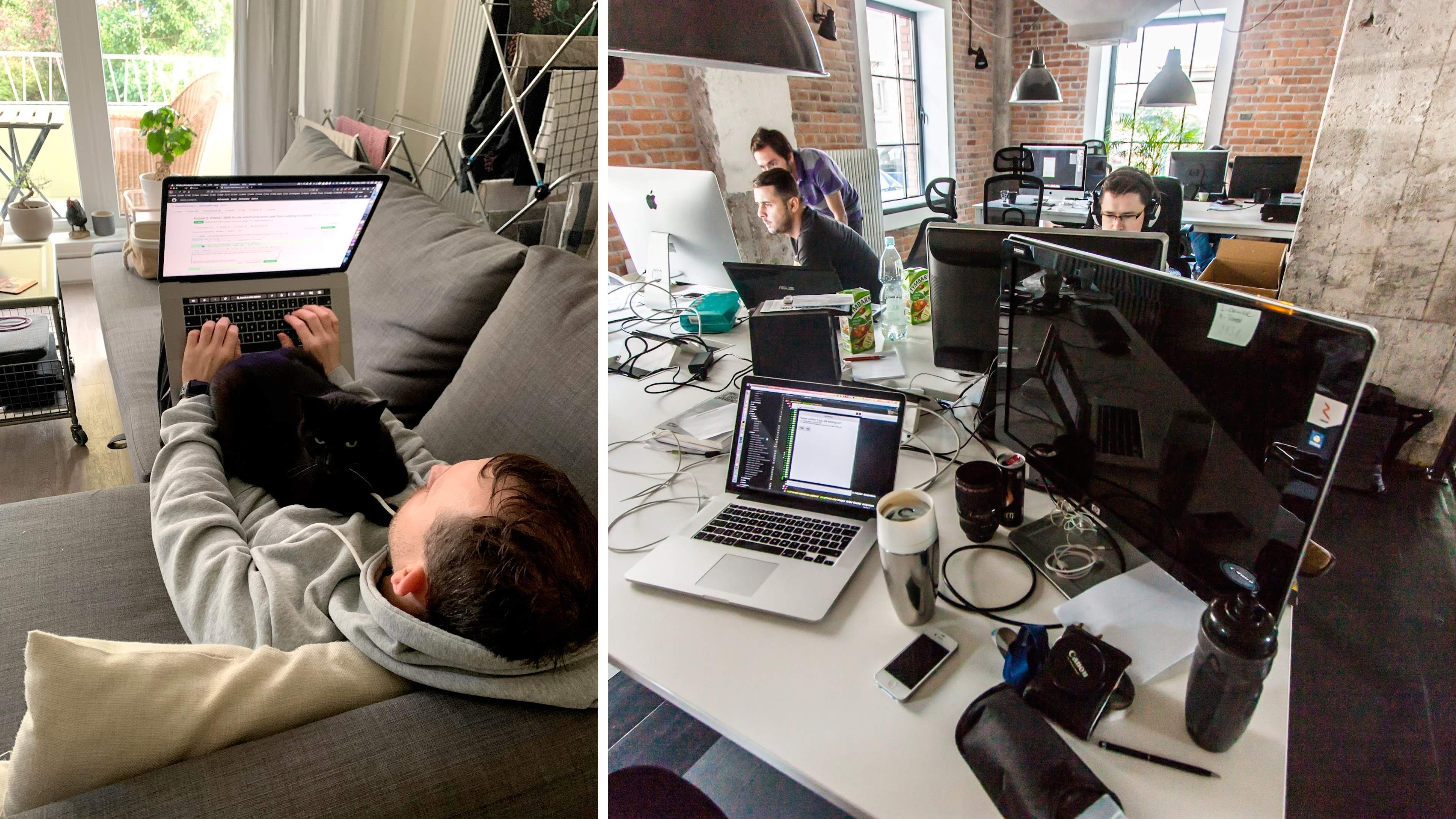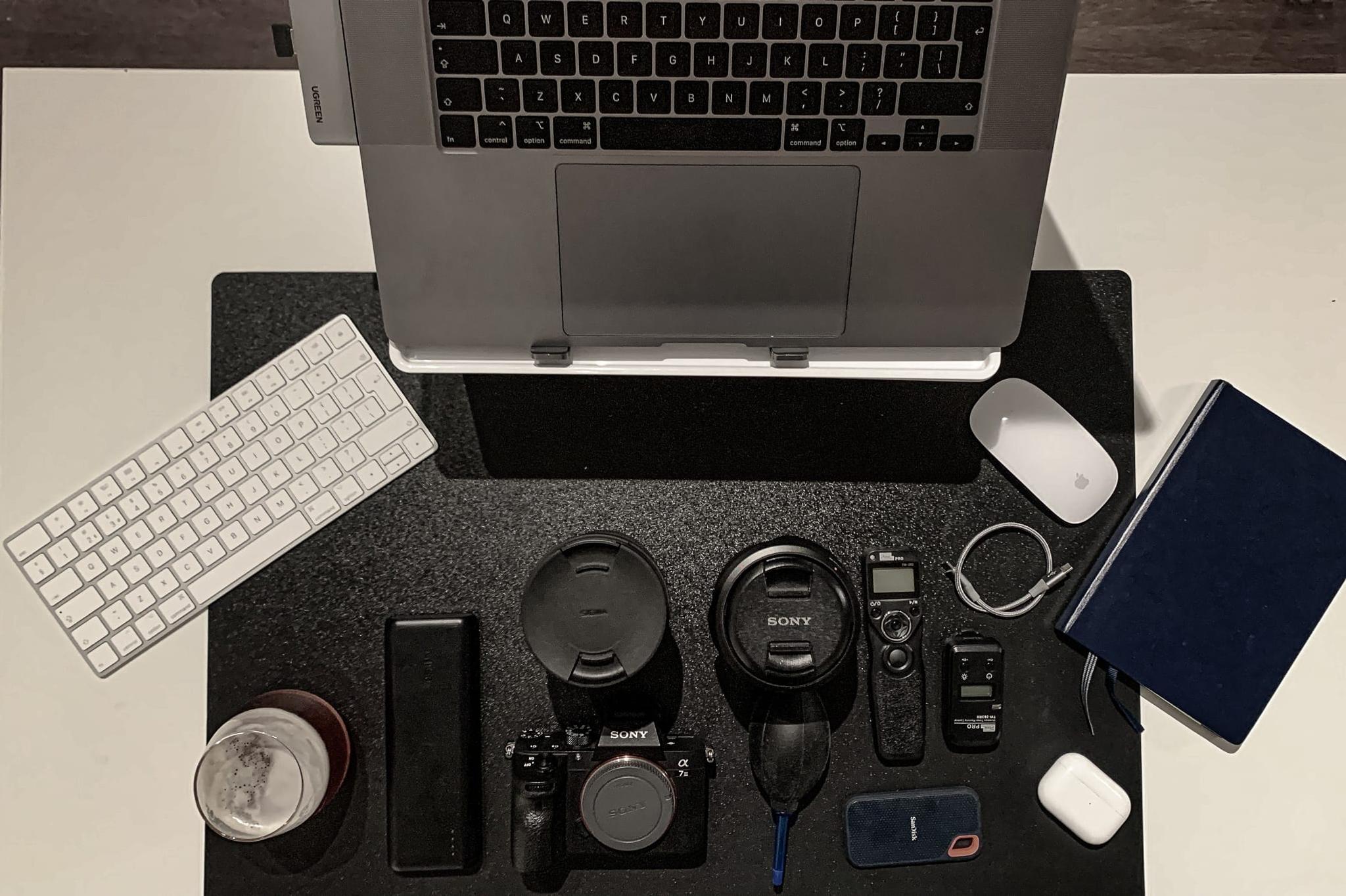The erosion of the current working model was already happening slowly over the last decade. Still, the previous years of COVID-related lockdowns strongly accelerated the process. I’d argue this was a positive change!
I want to tell a story about the changes, collaboration and work that happened during the last two years of my professional career that happened to be within a major enterprise organization in Germany.
The backstory
To begin with, I have to say that I was affected by the first lockdowns in 2020. Right after the country went into the “lockdown phase”, the company I was working for was almost immediately forced to make drastic changes. The day-to-day operations had to be adjusted to keep the business running, ensure financial stability, adopt the regulations and basically “survive” the scenario that probably wasn’t exercised earlier.
Part of these “changes” was to temporary suspend (or let go) the contractor’s workforce to be able to prioritize support for employees (and receive government support). The fair approach, I would say. It was also a “forced approach” by some government regulations. Unfortunately, at that time, I was an external contractor, and I was forced to take some “off-time”. Fortunately, that time was covered by the subcontracting agency I was working with.
In the end, it worked out OK. The company reassessed their financials and slowly started bringing back the valuable people (who also happened to be contractors). I was back at work within a month.
Remote by default
The significant change that had happened was in the perception of remote work. The working “agreement” had changed overnight from remote by exception to remote by default.
It’s hard to rank this change because often, it is a very subjective topic. For example, this wasn’t even a meaningful change from my perspective. As a contractor, I was working remotely almost all the time anyway. It was more about aligning everyone else to the baseline.
So what is the baseline?
It is the work that matters
If you’re not experienced in conventions of remote work, I will urge you to read “REMOTE: Office Not Required”. It’s a fantastic book from the founders of Basecamp - a very successful yet still a bit of an “alternative” company. It is a “No Bullshit” guide for treating people right, respecting the customers and actually getting s**t done.
Take a look at the picture collage below. Do you see the difference in productivity?

The image on the left is my “work environment” just a couple of months ago. It’s not something that would happen every day as it is not as comfy as it looks. But still. The image on the right is a setup I had in the past (actually more than 5+ years ago, but that’s irrelevant) when I was commuting to the agency’s office 4-5 days a week.
How can you “gauge” a commitment level, the results of a person’s work? How do you measure their engagement in the product they are working on?
Well, guess what? You can’t do that! It is not that simple. What matters are the people you have and how much you trust them to do the work (they do) for you?
The disruption
In my perception, the major disruption is not about how companies evaluate (or monitor) employees’ work. It is about the choice they have to make in response to what the employee market dictates:
- Should we keep our cosy 3500 sqm office when only 20% of the workforce is willing to visit it (and maybe even once or twice a week)?
- Do we differentiate our salary based on where the person lives? E.g. London vs. Glasgow, Munich vs Leipzig?
- Do we consider hiring people from outside the country? Does that even work from a legal perspective?
On the other side, the working folks (employees) are also probably realizing aspects that could change their perception of work in a prominent way:
- “I can eliminate (and win back) the commute time!” - If you count just 30 minutes of commuting time that a person could “win” by staying home, it will translate to 10+ hours in a month! Almost 1,5 working days!
- ”I can be more flexible with my time!” - We all know how unpredictable life is: deliveries, handyman visits, children, or errands. The gain is frankly not about sorting things out. That’s what’s happening with the current work arrangements anyway. It is about peace of mind, flexibility and adaptations. You are the master of your time. You plan it, you own it, and you are in control. It is empowering!
- ”I can be more productive!” - This may not apply to everyone. Still, I realized that I’m less productive in the “office environment”. It’s just too many distractions—chats, coffee breaks, interruptions, going out for lunch, etc. Again, at your home, you’re the master of your time (if your family situation allows), and I’m sure many of you will try to be efficient with it.
Remote culture
What I noticed is that the remote culture happens before it is recognized by management.
For example, the developers don’t like having many meetings, so they settle up quickly for 1:1 exchanges to clarify and solve the topic. Also, the people with a proactive mindset in the organization will take things into their hands and, anyway, drive the essential topics of your company forward. They will talk with people they need to speak to. Propose the changes that have to be made. They’ll move forward.
It is all about empowering people. Letting the folks do the job company hired them for. Is it that simple? Yes, it is… if you hire the right people - it is not a subject for this piece (I may get back to this at some time, though).
But the remote culture actually is not easy to establish. How do you build interpersonal connections? How do you break the communication barriers, getting to know each other? The watercooler talk can’t simply be replicated with your Slack’s #watercooler channel. As much as the agile coaches in the organization will flex and bend to engage people with conversations, it is still at least a magnitude harder to introduce the changes.
The outcome
What’s my point in this? The disruption is already happening, and it’s sometimes funny to see businesses stuck with the thinking of the past decade, expecting folks to just come to the office and work from there, wishing the work results will be there.
At least in the tech industry, the reality is that it doesn’t matter where we are to do most of our work.

Two years ago, when the company made an overnight switch to 100% remote work, affecting dozens, if not hundreds of engineers, it went fine. We were able to deliver most of the features on time. The train continued forward, and we stayed productive.
I would even argue that we were more productive in some cases!
Of course, it “ain’t all sunshine and rainbows”. Interpersonal culture can suffers. It’s hard to build good interpersonal connections over Teams. Some bad actors will abuse the freedoms they hard. Tech could (and probably will) fail. Government regulations will be hard to navigate.
But it is the direction the world is heading. Correction: it is already the current world. Let’s accept that, embrace the change and move forward.




